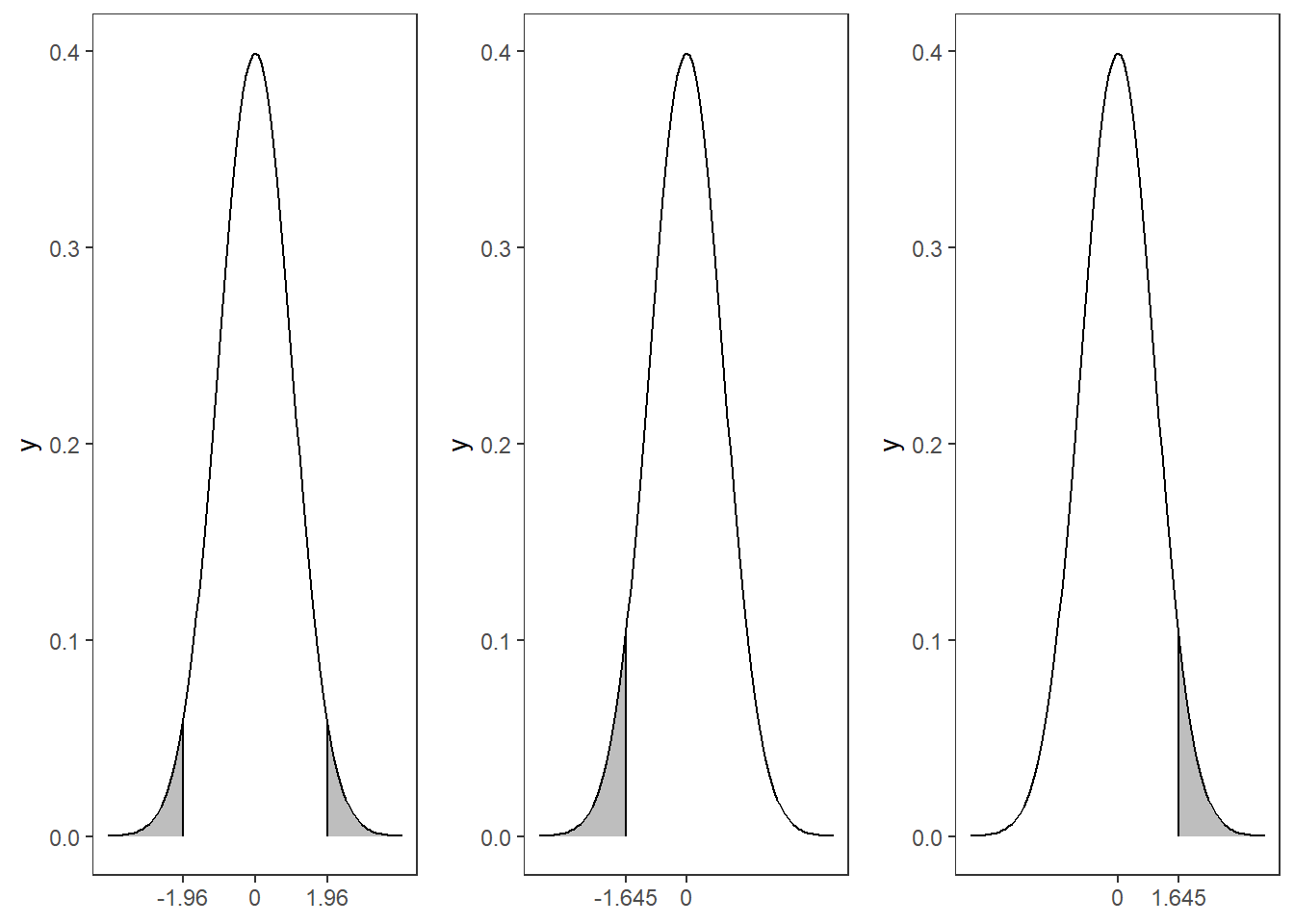9 Hypothesis Testing
There are slides and a YouTube Video associated with this chapter:
A hypothesis is a statement about a population claiming that a parameters takes on a particular value or falls within a certain range of values. The steps of a hypothesis test are:
- Formulating the null hypothesis \(H_0\) stating that the parameter takes a particular value:
- One-sided test: \(H_0\): \(\mu \geq \mu_0\) or \(\mu \leq \mu_0\)
- Two-sided test: \(H_0\): \(\mu = \mu_0\)
- Setting the significance level \(\alpha\), e.g., 1%, 5%, or 10%.
- Test statistic: Value based on the sample used to reject or fail to reject the null hypothesis.
- Critical value and p-value:
- Critical value represents the border point between rejecting and failing to reject \(H_0\).
- p-Value: Probability of observing the parameter given the null hypothesis. Small p-values represent evidence against \(H_0\).
Note that equality is always part of \(H_0\), i.e., \(=\), \(\leq\), or \(\geq\).
There are two types of errors associated with hypothesis testing. A Type I error occurs if \(H_0\) is true but you reject \(H_0\). A Type II error occurs if \(H_a\) is true but you fail to reject \(H_0\). The significance level is the largest acceptable probability of committing a Type I error. This is denoted with \(\alpha\). There are two-sided and one-sided hypothesis tests:
